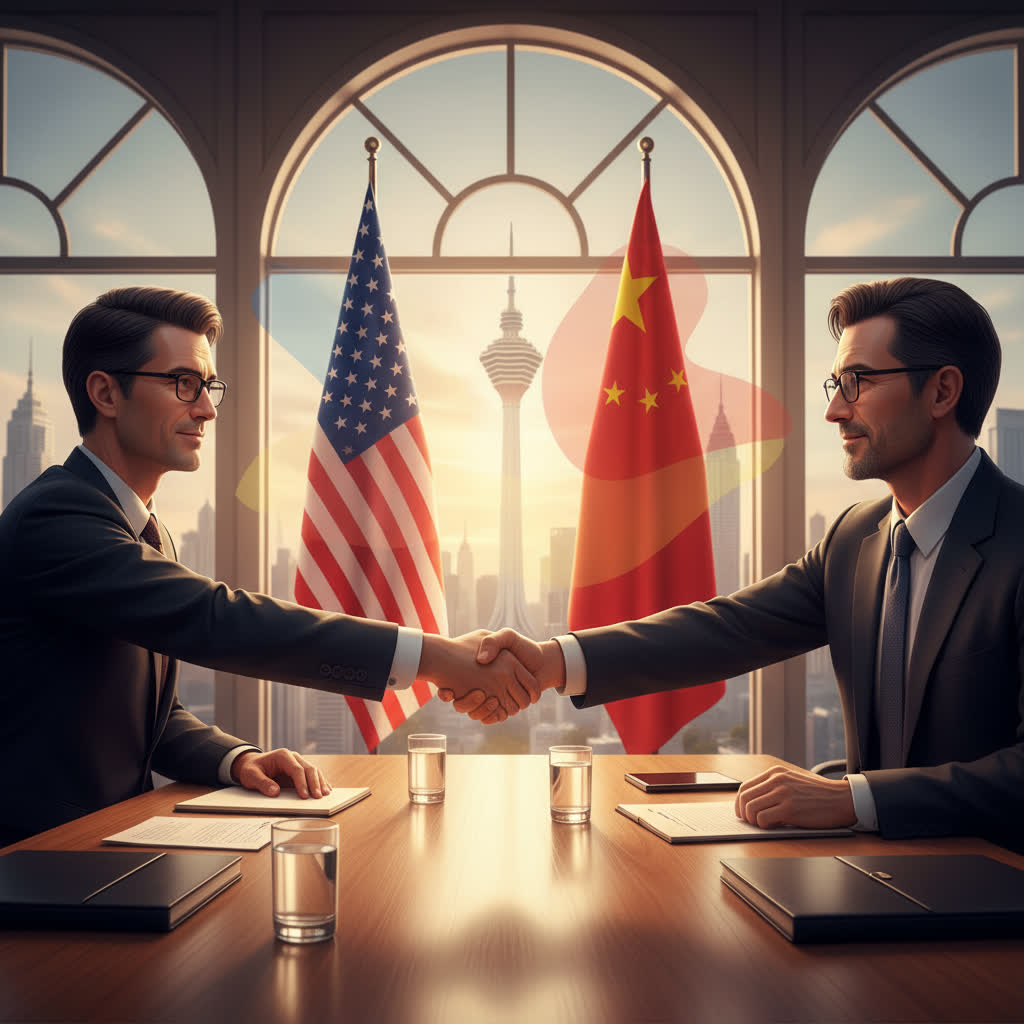In a significant diplomatic development, high-level officials from the United States and China convened in Kuala Lumpur, Malaysia, on Saturday in a concerted effort to ease the escalating trade tensions between the world’s two largest economies. The discussions bring renewed hope for a path toward constructive engagement, as both nations seek to manage a fraught landscape of tariffs, export controls and strategic supply-chain competition.
1. A High-Stakes Meeting
The meeting saw U.S. Treasury Secretary Scott Bessent and U.S. Trade Representative Jamieson Greer join their Chinese counterparts — Vice Premier He Lifeng and lead trade negotiator Li Chenggang — at the iconic Merdeka 118 tower in Kuala Lumpur.
They met amid a backdrop of mounting friction: threats by the U.S. to impose a 100 % tariff on Chinese goods as of November 1, retaliatory export restrictions by Beijing on rare earths and strategic resources, and expanding black-lists of Chinese firms by the U.S. government.
2. Why Today’s Context Matters
The context of the negotiation is particularly sensitive. A previous “interim” deal brokered earlier this year had temporarily eased tensions: the U.S. rolled back some tariffs, China agreed to resume certain imports, and rare-earth flows briefly improved.
However, more recent moves — such as the U.S. broadening its export-control regime and China announcing tighter curbs on strategic mineral shipments on October 10 — threatened to unravel that détente.
The Malaysian meeting thus aims to create a stabilising moment ahead of an upcoming summit between U.S. President Donald Trump and Chinese President Xi Jinping, scheduled to take place during an economic-summit in South Korea next week.
3. Key Objectives on the Table
Among the issues discussed:
-
A potential postponement of new tariffs by the U.S.;
-
Easing of Chinese restrictions on strategic exports;
-
China resuming purchases of U.S. soybeans (an important political symbol for U.S. farmers);
-
Broader discussions of technology-transfer, supply-chain security and regional stability (including Taiwan).
Notably, President Trump indicated that Taiwan would be raised at the summit — though he reaffirmed there were no current plans for a visit.
4. Why Escalation Was a Real Risk
The stakes for escalation were high: expanding trade restrictions threaten not only bilateral economic flows but global supply-chains, especially in high-tech goods and critical minerals. The U.S. accused China of trying to “control the global supply chain” by restricting rare-earth exports.
Such moves spook markets and can trigger retaliatory responses, potentially pressuring firms worldwide. The Kuala Lumpur dialogue can be seen as a means to pre-empt a full-blown trade war — whose ripple effects could reach far beyond Washington and Beijing.
5. What Might Happen Next
While the meeting did not produce a publicly-announced deal, the symbolism is meaningful: it signals both sides recognise the risk of uncontrolled escalation and the value of talks. The upcoming summit between Trump and Xi is the next major milestone, where more definitive commitments may emerge.
If successful, we could expect: a temporary tariff freeze, restored buying of U.S. agricultural goods by China, easing of export controls, and a framework for ongoing engagement rather than confrontation.
If unsuccessful, tensions could rapidly flare again — with new tariffs, further export curbs, and increased risk of fragmentation in global trade.
6. Why It Matters for the World
Given the sheer scale of the U.S. and Chinese economies, their trade relationship has outsized global implications. Market sentiment, supply-chains from semiconductors to rare-earth elements, and global growth all lean on the trajectory of this bilateral dynamic.
For businesses and investors, the key takeaway is: while politics remains uncertain, the possibility of a de-escalation provides at least some room for relief. For policy-makers, the meeting underscores the importance of diplomacy in managing a complex, inter-dependent world.
Conclusion
The Kuala Lumpur talks represent a tactical pause in what could otherwise spiral into a major trade confrontation. While no major agreements were publicly finalised, the meeting sets the stage for the upcoming summit between President Trump and President Xi — an event that could either stabilise or further strain U.S.–China relations. In the current global climate, the world will be watching.
Ready to start your cryptocurrency journey?
If you’re interested in exploring the world of crypto trading, here are some trusted platforms where you can create an account:
- Binance – The world’s largest cryptocurrency exchange by volume.
- Bybit – A top choice for derivatives trading with an intuitive interface.
- OKX – A comprehensive platform featuring spot, futures, DeFi, and a powerful Web3 wallet.
- KuCoin – Known for its vast selection of altcoins and user-friendly mobile app.
These platforms offer innovative features and a secure environment for trading and learning about cryptocurrencies. Join today and start exploring the opportunities in this exciting space!

Join our crypto community for news, discussions, and market updates: CryptoBCC on Telegram.

Disclaimer: Always do your own research (DYOR) and ensure you understand the risks before making any financial decisions.




